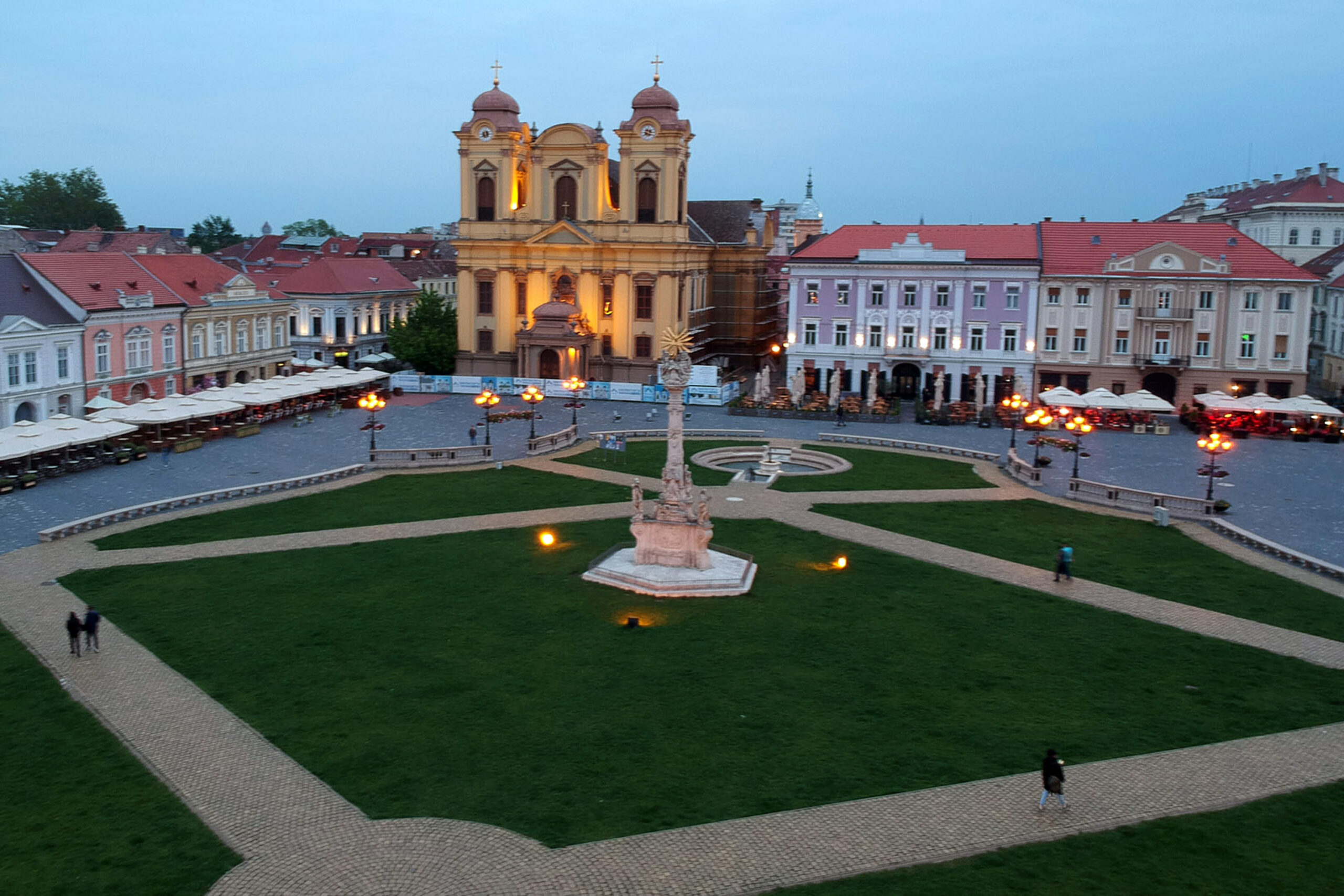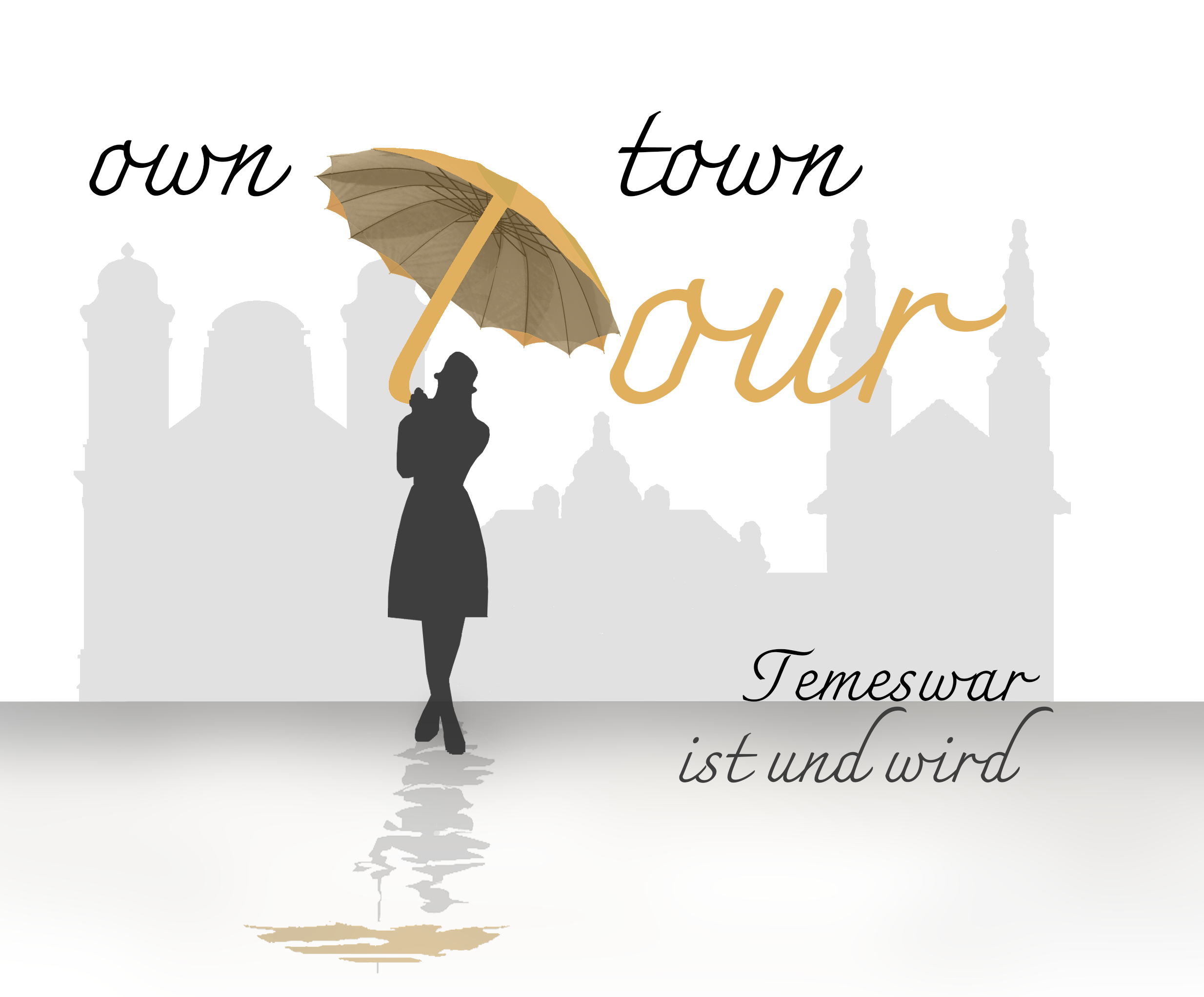Union Square
Piața Unirii
from 1733
Public area


The Heart of the City with its Finger on the Pulse of Time
Given the multiethnic history and tradition of Timisoara, the squares have different names. Cathedral Square with its beautiful buildings is the heart of the old, Habsburg Timisoara. In Romanian, it is called Piața Unirii (“Unification Square”), in Hungarian, Losonczy Tér, after the defender of Timisoara before the Turkish conquest of 1552.
The square was recreated by the Habsburgs in Baroque style after the withdrawal of the Turks. At its eastern end stands the Catholic Cathedral, directly across from the Serbian Orthodox Episcopal Church, whose back faces the viewer, as the façade and its entrance are behind the square.
On the north side, there are still a few one-story baroque buildings from the time of the construction of the square. The houses on the other three sides were later replaced by multi-storey buildings in the 19th and early 20th centuries.
On the south side stands the so-called “Baroque Palace”, the largest building on the square. It was originally built as a county house for the administration of the Banat in the 19th century. The composers Franz Liszt and the son of Johann Strauss stayed there on their concert tours, which had also taken them to Timisoara. Today, the palace houses the Timisoara Art Museum, which offers a permanent collection of regional art as well as space for changing exhibitions.
To the west is the Serbian Orthodox Bishop’s Palace (Art Nouveau/Secession), and next to it, the back of the Serbian Orthodox Episcopal Church.
The square, through its diverse architecture and the two cathedrals of the then prevailing faiths, exemplifies the tolerance for the different religions and nations in the city of Timisoara that has existed over the past three centuries. Two episcopal churches in one place is a rarity. They give the square a special silhouette through their towers, which we have included in our logo due to their uniqueness.
In the middle of the square, slightly elevated on a relief, stands the Holy Trinity Column. It rests on a triangular pedestal and is equipped with a triangular column and several sculptures and relief paintings. The Holy Trinity is enthroned on the column. The sculpture is attributed to the workshop of the Viennese artist Raphael Donner and was donated in gratitude for surviving the plague of 1738-1739.
A few steps away from the column, we descend a few steps and reach a public drinking fountain, whose water, due to its healing powers, not only quenches one’s thirst, but also awakens new strength for further sightseeing. For those who are not quite satisfied with water, there are other alternatives. Today, the historic square presents itself as the best place in town with numerous bars and restaurants all around the square. When the weather is nice, which prevails in Timisoara almost year round, residents and tourists alike meet on the inviting terraces.
Tour sights
- 1. Theresia Bastion
- 2. Lutheran Church
- 3. Union Square
- 4. Saint George’s Cathedral
- 5. Serbian Orthodox Cathedral
- 6. Miksa (Max) Steiner Palace
- 7. Brück House
- 8. Dicasterial Palace
- 9. Klapka Library
- 10. The “Guild Tree”
- 11. St. George's Square
- 12. Prince Eugene House
- 13. Citadel Synagogue
- 14. Liberty Square
- 15. Huniade Castle
- 16. National Opera House
- 17. Victory Square
- 18. Corso
- 19. Orthodox Cathedral
- 20. Piarist Ensemble
- 21. Reformed Church
- 22. Doja Street
- 23. Journey through Time
- 24. Rose Garden

